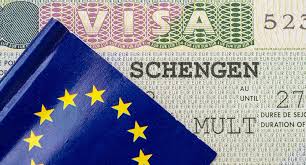As the summer of 2024 approaches, prospective travelers aiming to secure a Schengen visa may find it beneficial to apply to countries with historically lower rejection rates. According to Schengen Visa Statistics, Iceland, Switzerland, Latvia, and Italy are among the countries with the easiest Schengen visas to obtain, thanks to their lower rejection rates.
Conversely, Malta, Estonia, and Belgium have some of the highest rejection rates, making them less ideal for visa applicants. Malta leads with a 37.6% rejection rate in 2023, followed by Estonia at 33.1% and Belgium at 26.5%. Sweden and Croatia also have higher rejection rates, at 23.1% and 20% respectively, with the average rejection rate across all member states in 2023 standing at 54.2%.
For those planning their trips, the summer in Europe often extends beyond August, sometimes lasting until October, providing ample time to apply and travel. Applying for a visa at centers with lower rejection rates can increase the likelihood of a successful application. Once granted, a Schengen visa allows travel across all member states, provided the issuing country is the primary destination.
Countries with Highest Approval Rates
Here is a list of countries with the highest Schengen visa approval rates, which may provide useful insights for prospective applicants:
- Iceland: 2.2% rejection rate
- Switzerland: 10.7%
- Latvia: 11.7%
- Italy: 12%
- Luxembourg: 12.7%
- Lithuania: 12.8%
- Slovakia: 12.9%
- Germany: 14.3%
- Austria: 14.3%
- Greece: 14.7%
Germany, in particular, remains a strong option for obtaining a multiple-entry Schengen visa in 2024. Germany’s introduction of new migration measures will also facilitate Romania’s full accession to the Schengen area.
Tips for Successful Visa Applications
- Choose the Right Travel Insurance: Ensure that your travel insurance meets all Schengen visa requirements to avoid rejection due to insurance issues.
- Avoid Common Application Mistakes: Carefully follow the application guidelines to avoid errors that could lead to rejection.
Future Travel Requirements
By mid-2025, approximately 1.4 billion people will need to apply for an ETIAS (European Travel Information and Authorisation System) before traveling to the EU. The EU is developing an ETIAS mobile app to simplify the application process, expected to launch by mid-2025.
By planning ahead and selecting countries with lower rejection rates, travelers can enhance their chances of obtaining a Schengen visa and enjoy their European travels without unnecessary hurdles.



